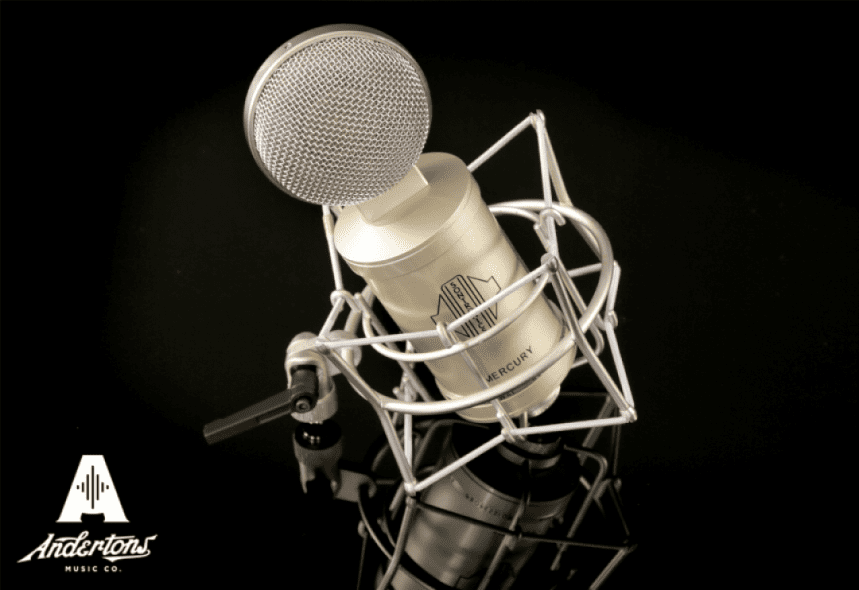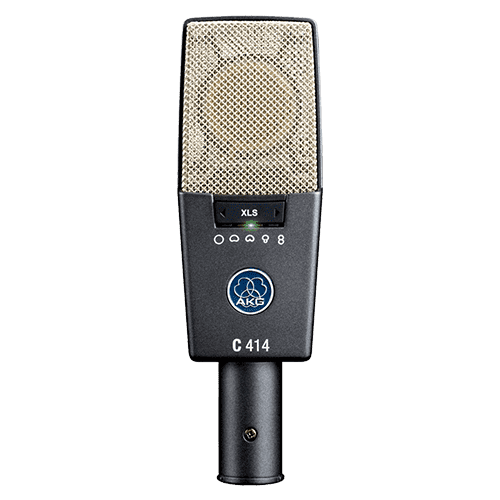What is a microphone?
A microphone converts sound waves into electrical energy. It's the first point of contact between you or your instrument and either your recording gear or an amp and speaker. Recording is how you track for songs, create voice messages or make podcasts, while the latter connection is used to amplify sound to become louder for an audience to hear.
It's paramount that you get the best microphone to suit the job you want it to do, as not every mic is optimal for every situation. There are a number of factors we'll cover such as construction type, polar pattern, impedance, connectivity and durability you'll need to take into consideration.

How does a microphone work?
The inner workings of a microphone are relatively simple to understand. Better still, you only need to familiarise yourself with a few parts to get an idea of the certain characteristics a microphone adds to a sound.
In essence, mics are transducers, which turn air fluctuations into electrical energy through a diaphragm. These are found in every microphone. The big three dynamic, condenser and ribbon microphone types carry signals out from the diaphragm in unique ways and that's a big factor as to why all three produce different results and are great for various tasks.
From there, the electrical signal requires a boost from an external preamp for processing if you want to record, or to be strong enough to send to a power amp and a loudspeaker, i.e a PA system.
What are microphone polar patterns?
A microphone polar pattern determines where sound is detected and at what angles a mic is sensitive to a sound source. Some microphones possess the ability to switch between patterns to suit the situation. Common patterns include:
- Omnidirectional - This type of mic 'hears' sound equally from all angles, whatever you have it pointed at. An omnidirectional pattern is ideal for lavalier mics clipped onto clothes.
- Cardiod – The standard choice when hooked up to a PA system or loud stage. It is only sensitive to noise originating from where it's pointed, making it somewhat feedback-resistant.
- Supercardioid – A narrower and more direct pattern than cardioid. It largely rejects ambient sound, but has some sensitivity directly behind its direction.
- Hypercardioid – Even more extreme focus than supercardioid. Perfect for picking up sound from a single source amongst other noise.
- Bi-directional – A figure-of-eight pattern. Detects sounds in front of and behind the diaphragm, but not directly from 90% side angles. Mostly used for large diaphragm or ribbon mics.
Types of Microphone
Microphones can be grouped into three broad categories: dynamic, condenser and ribbon, with their own distinct energy conversion methods, tonal characteristics and applicable strengths. Beyond that, each individual mic contains features unique to its design and creates a different sound; whether that's soft and warm, direct and lively, flat and neutral or something entirely different.
Let's take a look at the varying properties different mic types and how each one can be used in a practical setting.
A dynamic mic is the cheapest and most reliable form of microphone because of its simple vibrating coil design. It produces a low to average sound fidelity. But it's far from useless. Dynamic mics are mainly used for public address and gigging, as they don't require external power and are incredibly durable. They're also used to record guitars and drums due to their ability to handle high sound pressure levels (SPL).
Some of the biggest dynamic microphone producers include the world famous Shure, who make the SM57 and SM58, and Sennheiser with the E835 and E935. All of these mics are cardioid, making them the optimal choice when dealing with high noise levels on stage, or placed in front of loud instrument speakers.
If you're after the very best in sound quality, you'll find it here. Condenser microphones produce a far higher sound fidelity than dynamic mics thanks to a very thin diaphragm membrane, which transfers energy to a back plate and alters the capacitance of a circuit. The resulting sound is clean, crisp and detailed.
Condenser mics are relatively expensive because of their finely-tuned components. FET circuit condensers also require phantom power to run, which used to be a bigger problem back in the day when preamps didn't provide it, but it's something to consider when making your connections in a recording or live setup.
Popular condenser mic producers include Neumann, AKG, Rode and Blue Microphones. While not the perfect choice for live guitars or drums due to SPL, condensers thrive when applied to vocals and recording applications.
Ribbon mics are technically dynamic mics as they don't require phantom power like a condenser. But because they produce a dramatically warmer, high quality sound than their cheaper dynamic counterpart, they're separated into a class all by their own.
A ribbon mic consists of a small aluminium strip suspended between two magnets, which allows it to capture incredibly detailed sound waves. Buy design, this is more delicate than any other mic style, but the results are worth the extra care and money you'll invest. Many sound engineers swear only by ribbon mics.
Popular ribbon mic brands include SE Electronics and Sontronics. Both companies specialise in medium-to-high class mic production. They're great mics for picking out small nuances and works well when combined with the signal from a condenser.
What Microphone Should I buy?
Best mics for guitar amps
The mic'ing process for recording or capturing the live sound of an amp is an important step in getting optimal audio quality. You can't go wrong with a dynamic mic in either circumstance, which can handle the volume levels of electric guitars or basses and still produce a clear sound. If you're in a studio setting, you could opt for a higher fidelity condenser or ribbon. Just take it a bit easier on the volume.
Best mics for vocals
If you're singing live, either dynamic or condenser mics will do a fine job. A condenser will capture better vocal quality, but you'll need to take good to keep it in working condition. As long as your mic has a cardioid polar pattern to prevent feedback, you're safe. In a studio? Condenser or ribbon mics all the way for the superior tonal quality. Just make sure to use a pop filter to temper plosive and fricative sounds.
Best mics for acoustic guitar
An acoustic guitar produces a far more delicate sound than that of an electric. You can pick up more nuances in its sound and for that reason you should opt for a condenser or ribbon mic. Place the mic a foot in front of the soundhole to get direct sound projection, or move it further back for a natural room reverb.
Best mics for public speaking
This is a similar situation to live vocal mic use, as you won't want to cause feedback by directing the mic towards the PA system. The main difference here is that you won't need to the capture finer details of a performance. Pick up an inexpensive dynamic microphone and you're fully covered. If you want to go hands-free, lapel mics are the obvious choice.
Best mics for podcasting
For recording direct into a DAW on your PC, you'll want a mic that's both easy to use and produces super clear vocals. USB microphones have that ground covered. These nifty condenser style mics usually come equipped with bases, grips or boom arms to position as you like.
Want to Learn More?
Check out more of our dedicated guitar guides and information:


